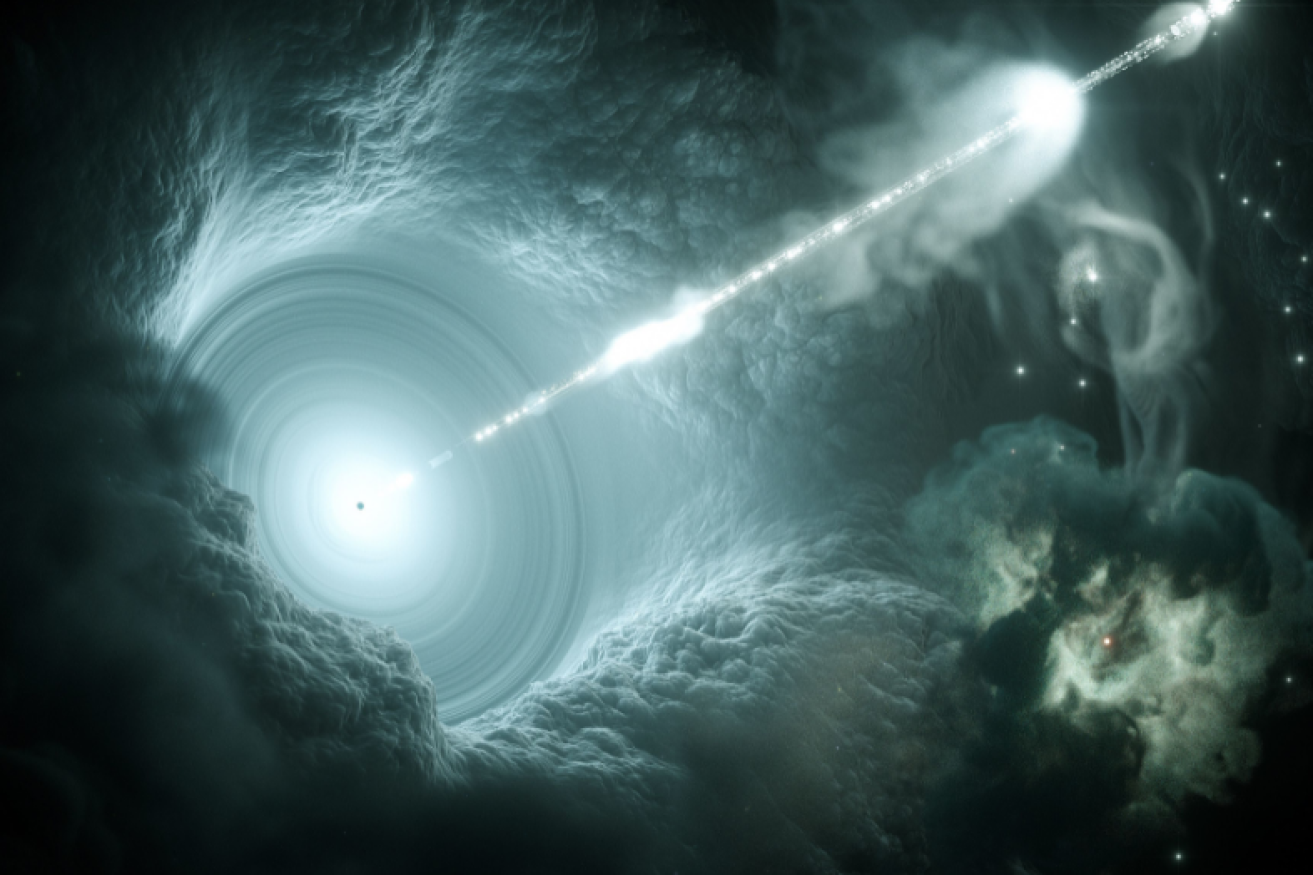Space discovery: Astrophysicists pinpoint home of ‘ghost particles’

The neutrino came from a galaxy far, far away and only took four billion years to arrive. Graphic: DESY/Science
In a far corner of the cosmos four billion years ago, a tiny particle called a neutrino started its journey to Earth.
It zipped along at near the speed of light towards our neck of the universe, never deviating from its course.
Being the smallest, lightest particle known to physics, the neutrino flew through matter like it was nothing.
Without an electric charge, it remained immune to the swaying influence of magnetic fields.
Soon after the neutrino set off, life emerged and flourished on Earth. Continents shuffled around in their tectonic dance. Plants, animals and fungi spread to all corners of the globe and mass extinctions repeatedly killed them off again.
And the neutrino continued on its way, until the evening of September 22, 2017, when it plunged through the Antarctic ice and crashed into an atom.
More than a kilometre beneath the surface, this collision created another particle called a muon.
The muon continued through the ice in the same direction but threw off a blue glow as it went — light that was sensed by basketball-shaped detectors suspended in the ice nearby.

A neutrino interacting with a molecule of ice. Coloured circles represent light collected by sensors frozen more than 1km beneath the surface. Photo: IceCube/NSF
Within a minute, the neutrino’s trajectory was calculated from the light pattern picked up by the detectors and sent to telescopes around the world.
They trained their eyes on that patch of the sky, scouring it for signs of the cosmic accelerator that spat out the neutrino all those aeons ago.
And, for the first time, they found one.
In the journal Science on Friday, astrophysicists pinpoint the first likely birthplace of a high-energy neutrino: a massive galaxy housing a supermassive black hole, spewing jets of matter towards us.
The black hole is called a blazar. Such objects were known to be a potential source of these baffling particles — but had never before been caught in the act.
And that confirmation is a big deal, said Nicole Bell, an astroparticle physicist at the University of Melbourne who was not involved with the work.
“This step of identifying a source is absolutely essential in order to genuinely do astronomy with neutrinos,” she said.
Neutrinos, Dr Bell explained, will now allow us to “see” otherwise invisible parts of the universe.
Subterranean ghost-catcher
We’re bathed in neutrinos, with trillions flying through our body every second, but you’d never know.
They mostly sail straight through the entire Earth unimpeded, earning their nickname “ghost particles”.
There are a few ways to make a neutrino. For instance, they’re a by-product of nuclear fusion, created when hydrogen mashes together to form helium in the Sun.
And energetic particles — mostly protons — from outer space, called cosmic rays, bombard our atmosphere to produce showers of neutrinos (along with other particles).
Neutrinos from the Sun and atmosphere are mostly low-energy particles.
But it’s the high-energy neutrinos created outside our galaxy, by the most cataclysmic events in the universe, that many astroparticle physicists are interested in.
To fire off a high-energy neutrino, you need a powerful particle accelerator — as powerful as, say, a supermassive black hole.
Astrophysicists think most massive galaxies have a supermassive black hole in their centre. Our galaxy, the Milky Way, has one.
It’s being fed at a very low rate, Dr Miller-Jones said, so it’s relatively dim.
While ours is quiet, some supermassive black holes, such as the one in TXS 0506+056, can be extremely active.
In their case, matter accumulates in a disc around the black hole and heats to hundreds of thousands of degrees.
The black hole produces powerful jets that act as particle accelerators, spraying material from the disc into space.
If a jet points towards Earth, the cosmic beacon is called a blazar.
So how are high-energy neutrinos born? No-one knows for sure, but the prevailing theory begins with cosmic rays such as protons, Dr Hill said.
As a proton whizzes along a supermassive black hole’s jet, it bounces back and forth across a shock wave, gaining an energy boost with each bump and accelerating it to near the speed of light.
“There’s evidence they make cosmic rays too. If they do, that’s a similar sort of mechanism [to a blazar] — cosmic rays interact and make pions, which make neutrinos.”
-ABC









